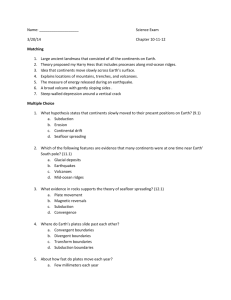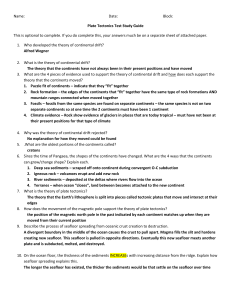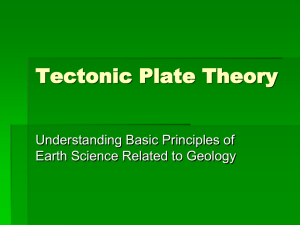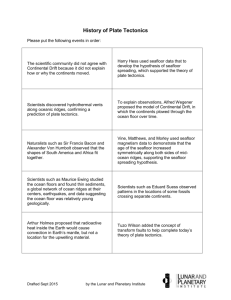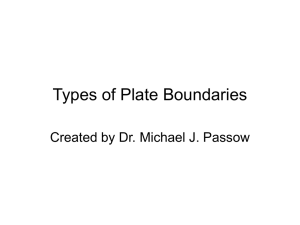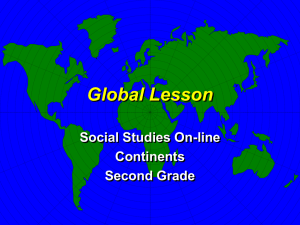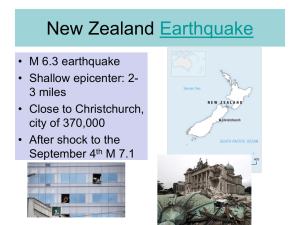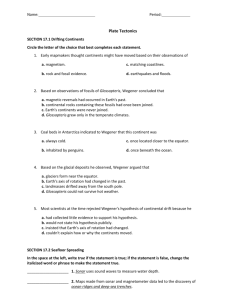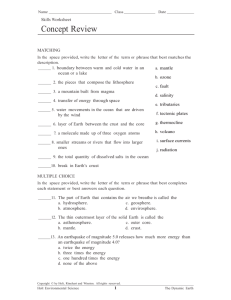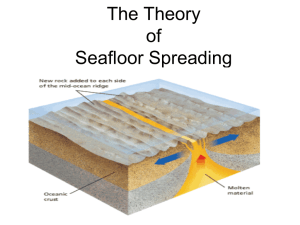Plate Tectonics Notes: Continental Drift & Seafloor Spreading
advertisement
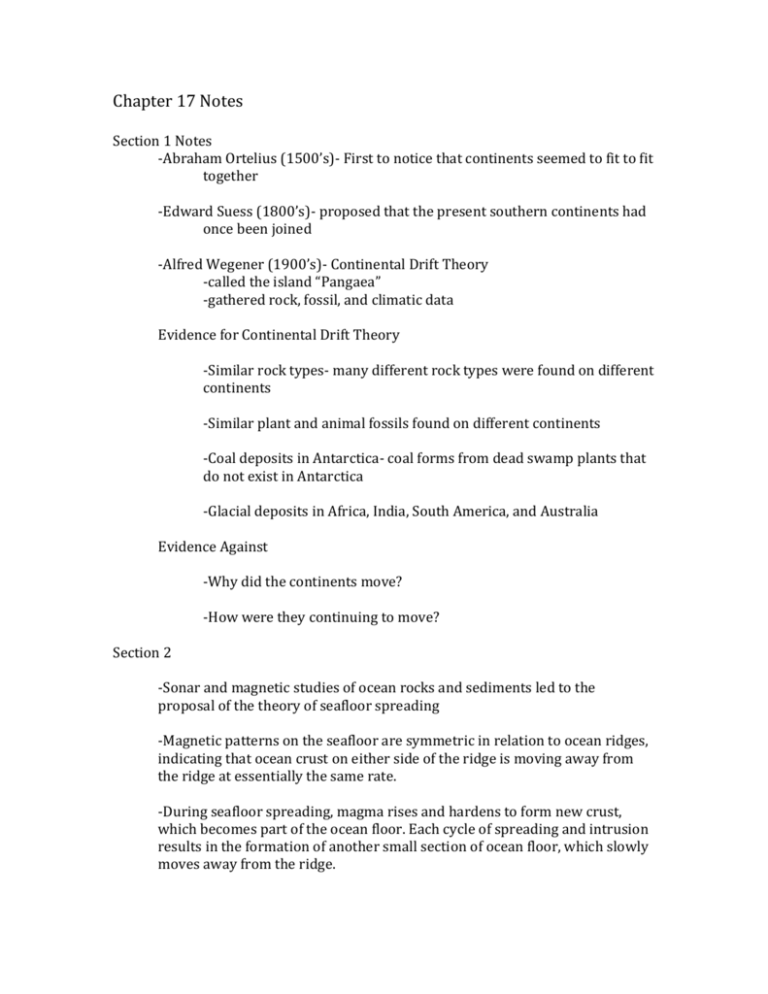
Chapter 17 Notes Section 1 Notes -Abraham Ortelius (1500’s)- First to notice that continents seemed to fit to fit together -Edward Suess (1800’s)- proposed that the present southern continents had once been joined -Alfred Wegener (1900’s)- Continental Drift Theory -called the island “Pangaea” -gathered rock, fossil, and climatic data Evidence for Continental Drift Theory -Similar rock types- many different rock types were found on different continents -Similar plant and animal fossils found on different continents -Coal deposits in Antarctica- coal forms from dead swamp plants that do not exist in Antarctica -Glacial deposits in Africa, India, South America, and Australia Evidence Against -Why did the continents move? -How were they continuing to move? Section 2 -Sonar and magnetic studies of ocean rocks and sediments led to the proposal of the theory of seafloor spreading -Magnetic patterns on the seafloor are symmetric in relation to ocean ridges, indicating that ocean crust on either side of the ridge is moving away from the ridge at essentially the same rate. -During seafloor spreading, magma rises and hardens to form new crust, which becomes part of the ocean floor. Each cycle of spreading and intrusion results in the formation of another small section of ocean floor, which slowly moves away from the ridge. Section 3- Plate Tectonics There are 3 types of boundaries for tectonic plates -Divergent-plates move away from one another -Convergent-plates move toward one another -Transform-plates move parallel to one another -Divergent Boundaries -Found mostly on the seafloor -Some form on land and create rift valleys -This is where new seafloor is added -Large ridges can be seen here along with a valley in the middle where new seafloor is made -Convergent Boundaries -3 types of convergent boundaries -oceanic-oceanic -oceanic-continental -continental-continental -oceanic-oceanic and oceanic-continental boundaries can create subduction zones where one plate slides beneath another -subduction zones create large trenches as well as volcanoes that line the ridges of these trenches -subduction zones are also where seafloor is destroyed when the slab being forced down is eventually melted and recycled -Transform Boundaries -when two plates move parallel to one another -crust is only deformed or fractured -normally do not occur on continents -some exceptions exist such as the San Andreas fault in southwest California Section 4 -Convection currents are transfer of thermal energy (heat) by the flow of a heated substance -Since heat increases with depth in the Earth’s crust, the upper portion of the mantle is cooler than the lower portion. This imbalance causes a convection current. -As matter is heated in the lower portion of the mantle it begins to rise because it is less dense than the upper portion. -As convection currents rise, they cause splitting in the crust at divergent boundaries -As convection currents sink, they cause convergent boundaries by pulling plates downward. -Convection currents can be very large but only move a few centimeters per year
